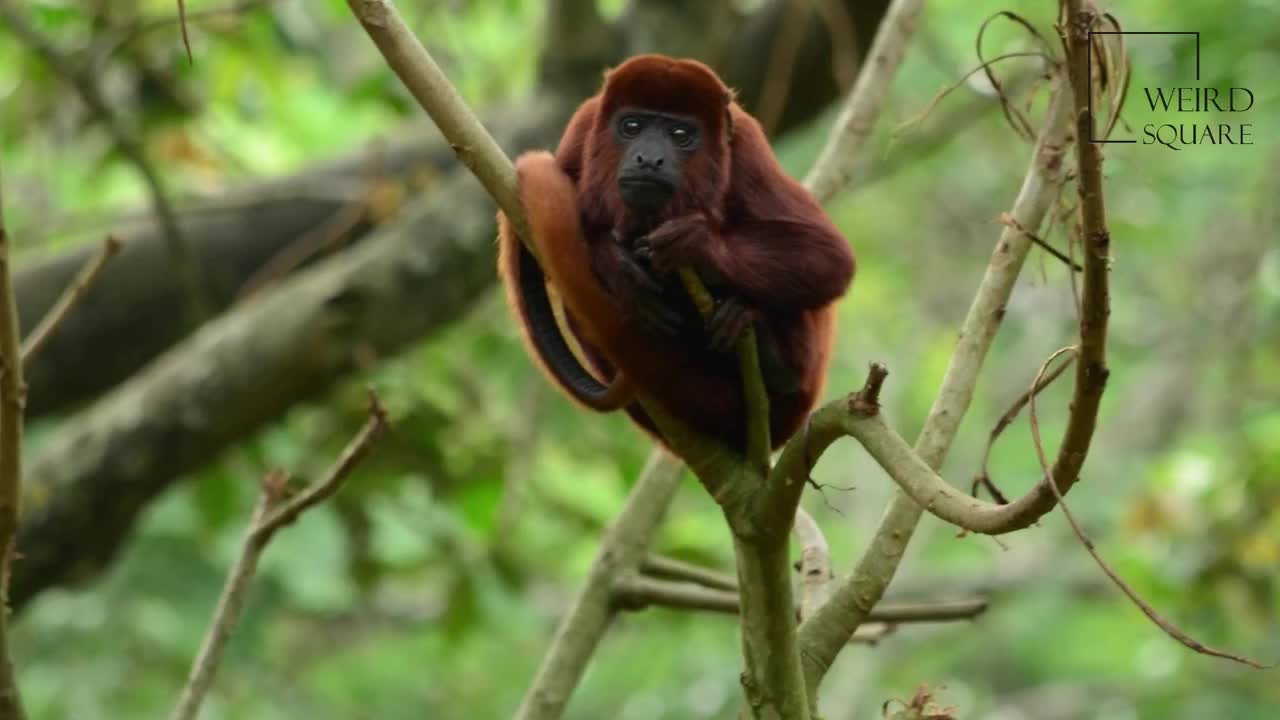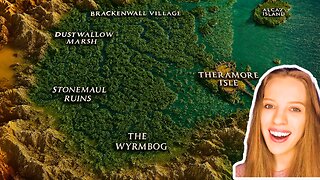Premium Only Content

Interesting facts about red howler monkey by weird square
The most, new, latest, shocking, weird, scary, funny, fascinating, interesting and amazing things | facts in the world.
Howler monkeys are among the largest of the New World monkeys. Fifteen species are currently recognized. Previously classified in the family Cebidae, they are now placed in the family Atelidae. These monkeys are native to South and Central American forests. Threats to howler monkeys include human predation, habitat destruction and being captured for pets or zoo animals. These monkeys are famous for their loud howls, which can travel three miles through dense rainforest.
Howler monkeys have short snouts and wide-set, round nostrils. Their noses are very keen, and they can smell out food (primarily fruit and nuts) up to 2 km away. Their noses are usually roundish snout-type, and the nostrils have many sensory hairs growing from the interior. They range in size from 56 to 92 cm (22 to 36 in), excluding their tails, which can be equally as long, in fact in some cases the tail has been found to be almost five times the body length. This is a prime characteristic. Like many New World monkeys, they have prehensile tails, which they use for picking fruit and nuts from trees. Unlike other New World monkeys, both male and female howler monkeys have trichromatic color vision. This has evolved independently from other New World monkeys due to gene duplication.They have lifespans of 15 to 20 years. Howler species are dimorphic and can also be dichromatic . Males are, on average, 1.5 to 2.0 kg heavier than females.
The hyoid of Alouatta is pneumatized, one of the few cases of postcranial pneumaticity outside the Saurischia. The volume of the hyoid of male howler monkeys is negatively correlated with the dimensions of their testes. Animal planet | Discovery | Netflix | Documentary | Animal World
| BBC Earth | NatGeoWild | Brave wilderness | The Dodo| Animal Aid Unlimited | Animal Planet | Real Wild | iPanda | Hope for Paws | Kruger Sightings | Discovery #animals
-
 2:00:53
2:00:53
MG Show
19 hours agoTrump Stops the Epstein Nonsense & Exposes FAKE MAGA; Victory Lap
67.3K58 -
 39:21
39:21
MattGaetz
1 day agoThe Anchormen Show with Matt Gaetz | Feeding the Dragon
22.7K20 -
 6:01
6:01
Michael Button
2 days ago $1.35 earnedMy History Degree Lied About Lost Civilizations
29.3K13 -
 9:36
9:36
MattMorseTV
1 day ago $3.84 earnedThe EU just FOUND OUT.
16.2K46 -
 22:39
22:39
Forrest Galante
1 day agoPrivate Tour of Australia's Craziest Zoo
149K13 -
 6:57:31
6:57:31
ABNERDAGREAT
8 hours ago🔴DISCORD VC/MUSIC ZELDA BREATH OF THE WILD SWITCH 2 EDITION🔴
4.96K1 -
 1:06:42
1:06:42
The Connect: With Johnny Mitchell
3 days ago $23.49 earnedTruth About The Epstein Files: CIA Agent Reveals The Connection Between The Mossad, Epstein, & Trump
69.2K84 -
 1:59:00
1:59:00
Side Scrollers Podcast
20 hours agoSuperman Movie MELTDOWN, FBI SEIZES Game Websites, Elmo Gets HACKED | Side Scrollers Live
15.8K5 -
 LIVE
LIVE
Welsh Girl
10 hours ago🔴 Is WoW Getting Worse or Better? Day 5
142 watching -
 6:56:18
6:56:18
RECON-RAT Guns & Gaming
2 days ago $0.05 earnedRECON-RAT - ARMA Reforger WWII - Testing new mod!
4.05K1